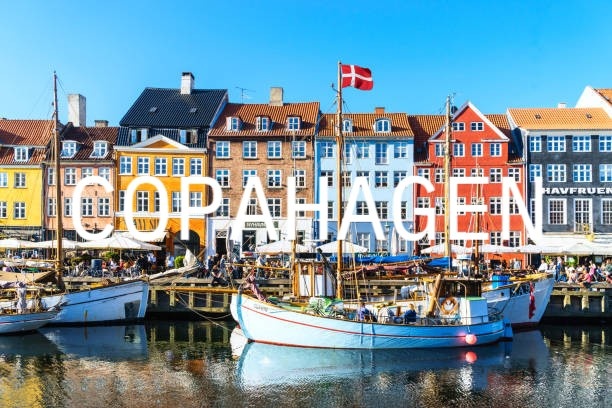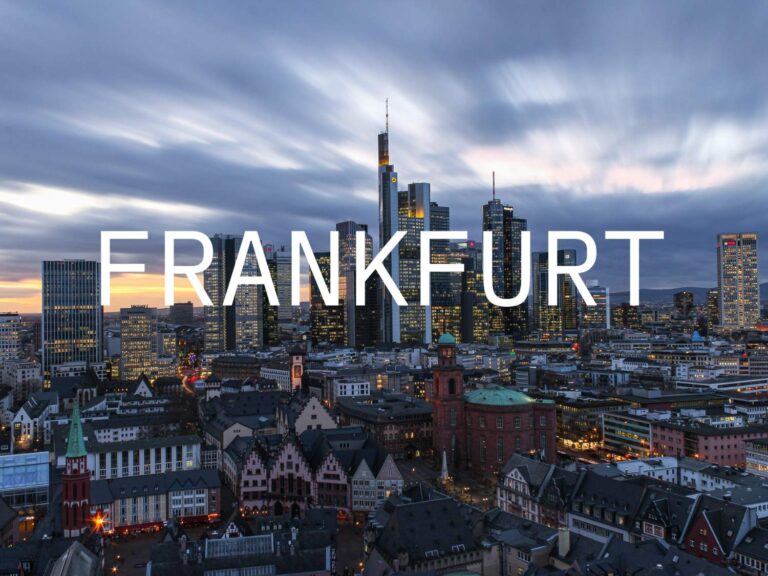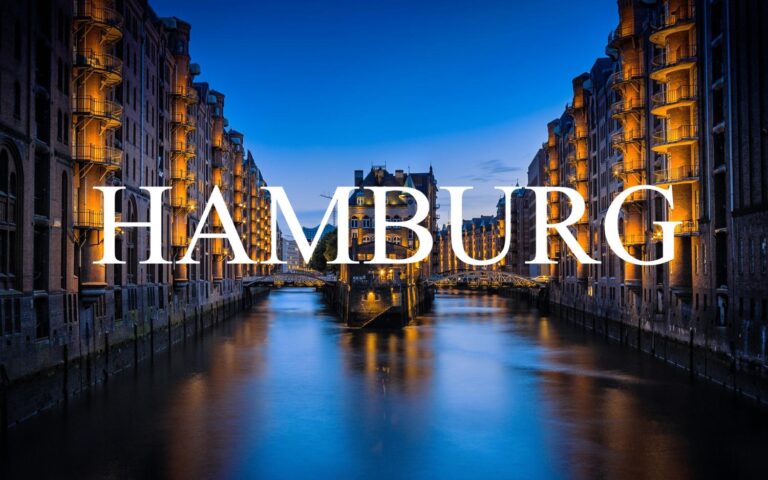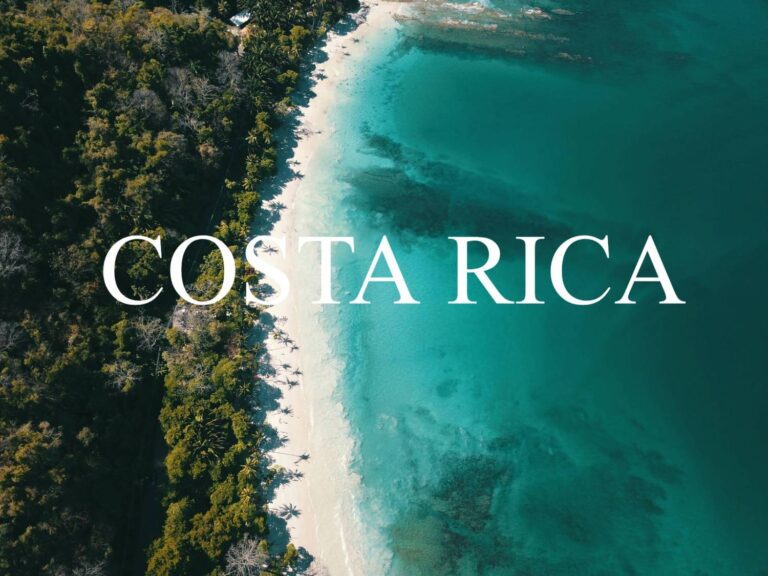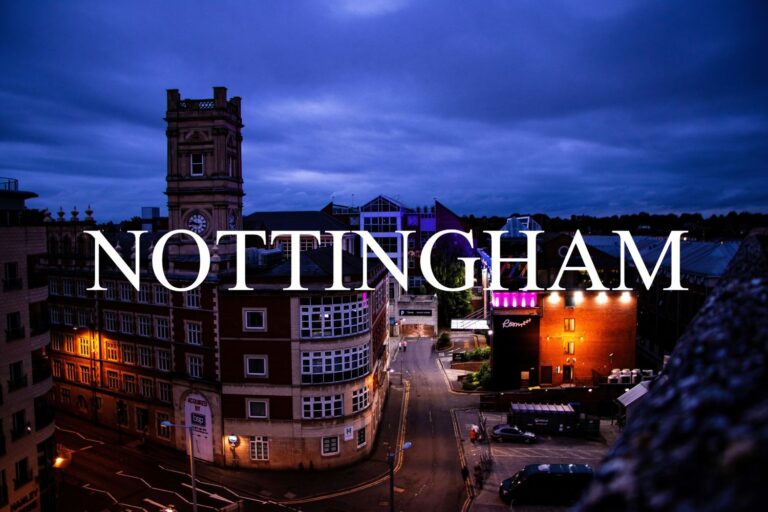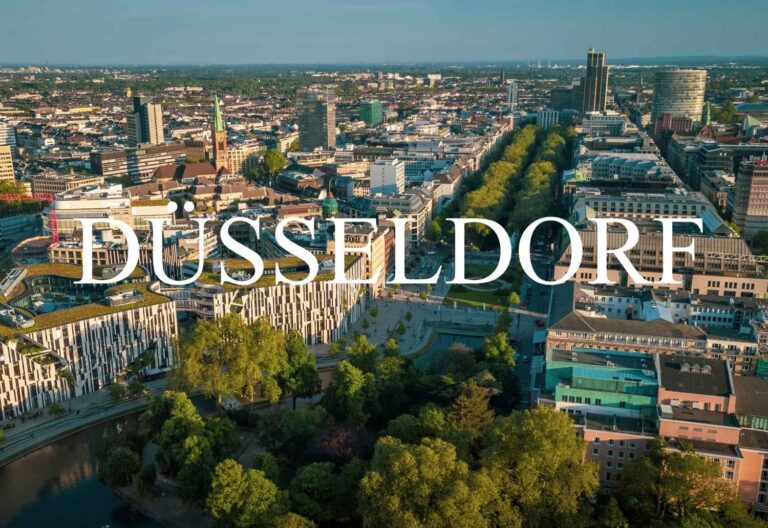
Rotterdam, the Netherlands’ second-largest city, stands out as a beacon of modernity and innovation, boasting a skyline filled with daring architecture that challenges tradition. Unlike the quaint, historic canals of Amsterdam, Rotterdam is a vibrant metropolis that celebrates its dynamic spirit through bold skyscrapers, cutting-edge design, and a lively urban culture.
This bustling port city, known as the “Gateway to Europe,” carries a rich maritime heritage that continues to shape its identity and economy. From the iconic Cube Houses and the futuristic Markthal to the bustling harbor tours, Rotterdam offers a unique fusion of history and forward-thinking creativity.
Food lovers will find themselves spoiled by Rotterdam’s diverse culinary scene, ranging from trendy fusion restaurants to cozy street markets offering global flavors. Art enthusiasts can explore innovative galleries and museums like the Museum Boijmans Van Beuningen, while nightlife seekers will enjoy a thriving scene of bars, clubs, and live music venues.
Whether you’re wandering along the Maas River, cycling through modern neighborhoods, or soaking in panoramic views from the Euromast tower, Rotterdam’s energetic vibe and welcoming atmosphere make every visit unforgettable. It’s a city that surprises at every corner—always evolving yet deeply rooted in its maritime past.
🗓️ Best Time to Visit Rotterdam
🌷 Late Spring to Early Autumn (May to September)
This is the best time to explore Rotterdam, with mild to warm weather ranging from 17°C to 25°C (63°F – 77°F). Perfect for walking tours, harbor cruises, and outdoor events like the North Sea Jazz Festival.
🍂 Autumn to Winter (October to April)
Quieter, cooler, and wetter—but still enjoyable. Indoor attractions, art galleries, and festive markets make the city cozy and cultural during these months.
💵 Currency & Travel Essentials
- Currency: Euro (EUR, €)
- Language: Dutch (English is widely spoken)
- Transportation: Trams, metro, buses, water taxis, and bike rentals
- Average Daily Budget:
- Budget: €50–€80
- Mid-range: €90–€130
- Luxury: €150+
🏙️ 10 Best Places to Visit in Rotterdam
Markthal Rotterdam
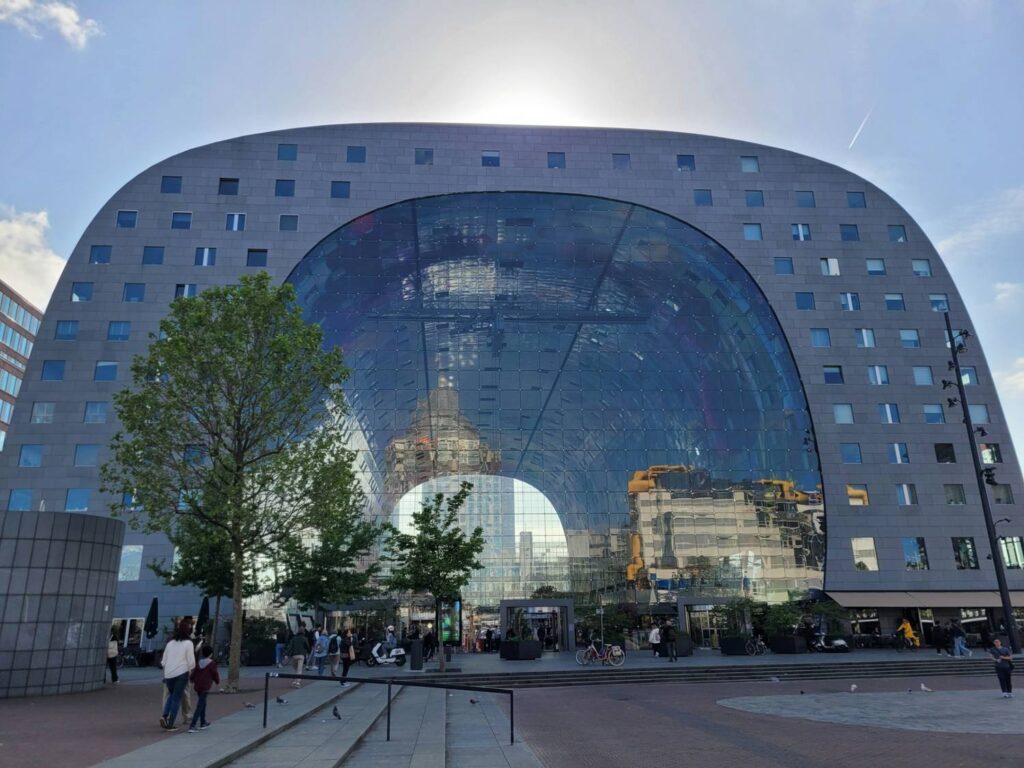
Photo by Alex vd Slikke on Unsplash<
Markthal Rotterdam is a must-see destination for anyone visiting this vibrant Dutch city. Located in the heart of Rotterdam, the Markthal combines modern architecture with a bustling food market, offering an immersive experience of Dutch culture, flavors, and innovative design. Whether you’re a food lover, an architecture enthusiast, or simply someone looking for a unique place to explore, the Markthal is a true feast for the senses.
This iconic building is both a market hall and a public space, bringing together over 100 food stalls, restaurants, and shops under one stunning, arched roof. Its unique design, coupled with a range of fresh produce, local delicacies, and international treats, makes it one of the most exciting places to visit in Rotterdam.
🌟 Highlights of Markthal Rotterdam
🏛️ Stunning Architecture
- Markthal is a masterpiece of modern architecture. Designed by MVRDV, the building features a striking arch-shaped structure that is both functional and visually impressive. The roof is adorned with a giant, colorful mural, known as “Horn of Plenty”, which spans an area of 11,000 square feet. The mural depicts oversized images of fruits, vegetables, and flowers, creating a dramatic, almost surreal atmosphere inside the market.
- The floor-to-ceiling glass walls allow natural light to flood the interior, giving the market a bright and airy feel, while the arches and open space invite you to explore every corner of this remarkable building.
🍇 Fresh Produce and International Flavors
- Markthal is home to over 100 food stalls, ranging from local Dutch delicacies to international cuisines. Whether you’re in the mood for fresh cheese, fish, or meat, or craving exotic dishes from around the world, the market has it all. Explore the vibrant stalls selling fresh fruit, vegetables, and locally made pastries.
- Don’t miss the chance to sample traditional Dutch snacks like bitterballen, stroopwafels, or poffertjes (mini Dutch pancakes). There are also many international food vendors, offering everything from sushi to paella to Middle Eastern delicacies.
🍴 Restaurants & Dining Experience
- Markthal isn’t just for shopping; it’s also a great place to enjoy a meal. The market features several restaurants and cafés where you can sit down and enjoy a variety of dishes. Whether you’re looking for a casual bite or a fine dining experience, there’s something for everyone.
- You can indulge in freshly prepared seafood, Italian pizza, Mexican tacos, or enjoy a meal with a view at one of the restaurants overlooking the market hall. Many of the food vendors also offer ready-to-eat options, so you can grab a bite and enjoy it in the communal seating areas.
🏪 Unique Shopping and Retail
- Besides food, Markthal is home to a variety of specialty shops offering a range of products such as fresh flowers, artisan bread, fine wines, and gourmet chocolates. The retail space around the perimeter of the market hall offers visitors the chance to shop for unique items while enjoying the lively atmosphere of the market.
- There are also several boutiques and design stores, making it a great place to find unique souvenirs or high-quality products made in Rotterdam.
🎨 Cultural and Art Exhibitions
- Markthal also serves as a venue for various art exhibitions and cultural events, adding to its appeal as not only a food market but also a cultural space. You’ll find an ever-changing lineup of local and international artists showcasing their works.
- The market’s interior design and architecture itself are also a form of art, blending functional spaces with aesthetic value. The mural on the ceiling, as well as the sleek, contemporary design, have turned Markthal into an architectural landmark in Rotterdam.
📍 How to Get There
- Location: Markthal is situated in the center of Rotterdam, making it easy to access from all parts of the city.
- By Public Transport: Markthal is well-connected by public transportation, including trams, buses, and the Rotterdam Metro. The Markthal tram stop is just a short walk from the building. The Beurs Metro station is also nearby, providing direct access to the market.
- By Foot: If you’re staying in Rotterdam city center, Markthal is within walking distance of major landmarks like the Cube Houses and Rotterdam Central Station.
- By Car: There are several parking garages around the Markthal area, including the Markthal parking garage, which is directly under the building. Be aware that parking can be limited during busy times, so it’s advisable to arrive early or use public transport.
🕒 Visitor Information
- Best Time to Visit: Markthal is a popular destination, so visiting during weekday mornings or early afternoons will offer a quieter experience. Weekends tend to be busier, especially during lunch and dinner times when the market is buzzing with locals and tourists alike.
- Opening Hours: Markthal is open seven days a week, with most food stalls and restaurants operating between 10 AM and 8 PM. However, individual vendors and restaurants may have varying hours, so it’s a good idea to check ahead if you have specific places in mind.
- Admission: Entry to Markthal is free, as it is a public market. Costs are only incurred if you decide to shop, dine, or take part in any special activities or events.
💡 Travel Tips
- 🧀 Try Local Dutch Delicacies: Don’t leave without trying some of Rotterdam’s famous food items, such as the traditional Dutch cheese or a freshly made stroopwafel (thin waffles filled with caramel syrup). The market’s food vendors offer the perfect opportunity to taste the flavors of the region.
- 🏙️ Explore the Surroundings: While in the area, take time to explore other nearby attractions, such as the Cube Houses (Kubuswoningen), the Witte de Withstraat for shopping and dining, or the Erasmus Bridge for stunning views of the city.
- 📷 Bring Your Camera: The unique architecture of the building, especially the stunning mural on the ceiling, makes Markthal one of the most photogenic places in Rotterdam. Be sure to snap some photos while you’re there!
Markthal Rotterdam is more than just a food market; it’s an architectural wonder and a vibrant social space that perfectly captures the city’s creative spirit. With its incredible design, diverse food offerings, and lively atmosphere, it’s an ideal spot to shop, eat, and explore. Whether you’re enjoying a meal, discovering unique local products, or simply admiring the building’s striking beauty, Markthal is a place that embodies the energy and creativity of Rotterdam.
Cube Houses (Kubuswoningen)
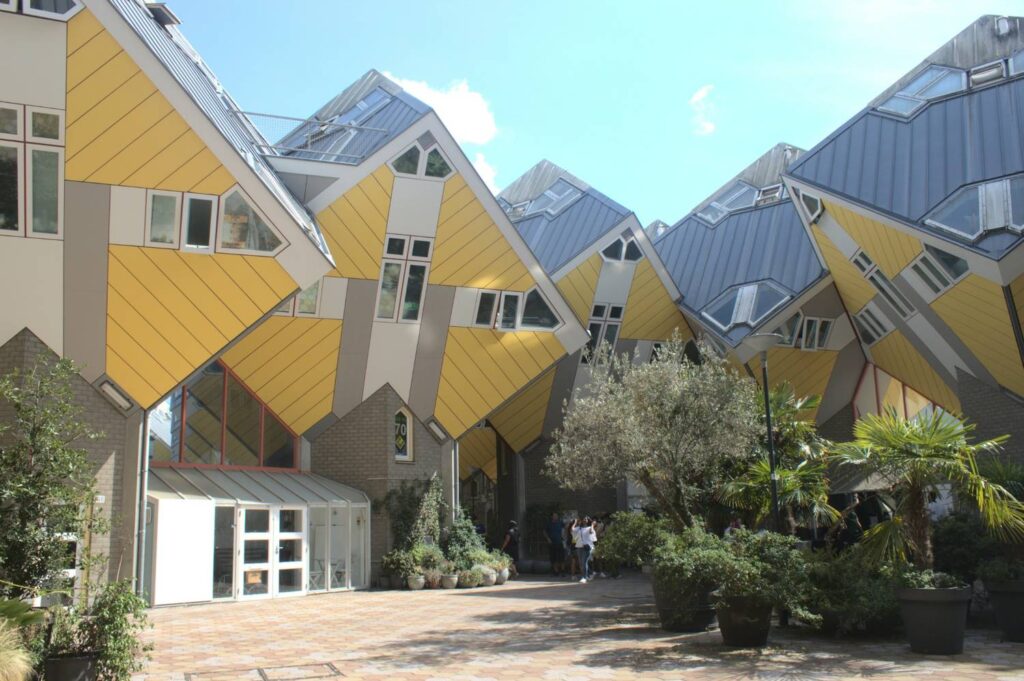
Photo by Giulio Gabrieli on Unsplash
The Cube Houses (Kubuswoningen), located in the vibrant city of Rotterdam, are among the most iconic examples of innovative architecture in the world. Designed by the renowned Dutch architect Piet Blom, these unique cube-shaped homes stand as a bold statement of modern design and creativity. Situated in the heart of the city, near the Rotterdam Blaak Station, the Cube Houses have become a must-see destination for architecture enthusiasts and curious travelers alike.
The striking and unconventional design of the Cube Houses defies traditional norms, with tilted cubes resting on hexagonal pylons, giving them the appearance of houses turned on their heads. This architectural wonder not only pushes the boundaries of design but also challenges the way we think about urban living.
🌟 Highlights of the Cube Houses (Kubuswoningen)
🏠 An Ingenious Design by Piet Blom
The Cube Houses were designed by Piet Blom in the 1970s as part of a larger project to revitalize the urban area around Rotterdam’s Blaak Station. Each house is tilted 45 degrees and mounted on a hexagonal pylon, creating an eye-catching structure that’s both functional and futuristic. The design was inspired by the idea of a tree, with each cube representing the branches of a tree and the surrounding space acting as the forest. This innovative approach blends art and practicality, offering a new perspective on urban architecture.
🏡 Inside the Cube Houses
Step inside one of the Cube Houses and you’ll find a clever use of space that maximizes every corner. The homes are multilevel, with the living area on the lower level, followed by a kitchen and bathroom. The upper floors are designed as bedrooms and study spaces, making the most of the cube’s unusual shape. The angled walls and tilted floors may feel unconventional at first, but they create a unique and cozy living environment. Large windows flood the interiors with natural light, making the most of the space despite the angular design.
The interior layout and design may vary slightly from house to house, but the overall concept is based on flexible living that encourages creativity and adaptability. The innovative use of space makes each Cube House a fascinating example of functional architecture.
🏙️ The Cube Houses as Part of Rotterdam’s Urban Landscape
The Cube Houses are located in the Blaak District, an area of Rotterdam that has become known for its avant-garde architecture. The houses are set among a variety of other modern buildings, and their distinct, futuristic appearance makes them stand out even in such a contemporary city. The public square around the Cube Houses is a lively area, filled with cafes, shops, and markets, offering visitors a chance to immerse themselves in the unique atmosphere of the neighborhood.
Nearby, you’ll also find the Markthal, another architectural gem in Rotterdam, which houses a massive indoor market with food stalls and restaurants. The Cube Houses are situated in close proximity to other modern buildings and public art installations, making the entire area a fantastic spot for a leisurely walk and exploration.
🛋️ Explore the Cube House Museum (Kube Museum)
For a deeper dive into the history and design of the Cube Houses, be sure to visit the Cube House Museum located in one of the cubes. The museum is housed in a fully furnished cube, where you can experience the unique living space firsthand and learn more about the architectural vision behind the project. The museum showcases the design process, the challenges of building such unconventional homes, and the philosophy behind Piet Blom’s vision. It’s a must-see for anyone with a love for architecture or curious about urban living.
📍 How to Get There
Address: Cube Houses (Kubuswoningen), Overblaak 70, 3011 MH Rotterdam, Netherlands, near Rotterdam Blaak Station.
- By Public Transport: The Cube Houses are easily accessible by public transport. The Blaak Station is just a short walk away, with access to metro, tram, and bus services that connect the Cube Houses with other parts of Rotterdam. From the station, it’s a 5-minute walk to the Cube Houses.
- By Foot: If you’re already in the city center, you can reach the Cube Houses by foot in around 10-15 minutes. The walk is a lovely chance to explore the modern architecture of Rotterdam along the way.
- By Bike: Rotterdam is an incredibly bike-friendly city, and cycling to the Cube Houses is an excellent option for those looking to explore the area on two wheels.
🕒 Visitor Information
- Best Time to Visit: The Cube Houses are fascinating at any time of year, but spring and summer offer the best weather for enjoying the surrounding public spaces and taking a walk through the neighborhood. If you’re looking for a quieter experience, visiting on a weekday morning will allow you to explore without crowds.
- Accessibility: While the Cube Houses are architectural masterpieces, they may present challenges for visitors with mobility issues due to their steep stairs and tilted design. The museum, however, is fully accessible, and there are nearby ramps and public spaces for visitors to enjoy.
💡 Travel Tips for Visiting Cube Houses
📸 Capture the Unique Architecture:
The Cube Houses are one of the most photogenic locations in Rotterdam, so don’t forget to bring your camera. The geometric design and vibrant colors create striking visual contrasts, making it a perfect subject for your travel photography.
🏛️ Visit the Cube House Museum:
If you’re fascinated by the architecture, the Cube House Museum is a great way to explore the concept and history of the design. Learn about how the houses were constructed and the challenges faced in making the unusual design practical for daily living.
🛍️ Explore the Surrounding Area:
The Cube Houses are located in a lively part of Rotterdam, with a variety of cafes, restaurants, and shops around the area. Be sure to check out Markthal, a short walk away, for an incredible indoor food market experience.
The Cube Houses (Kubuswoningen) in Rotterdam are not just an architectural landmark; they are a symbol of the city’s innovative spirit and a testament to the power of design in shaping our environment. Whether you’re an architecture enthusiast, a curious traveler, or simply someone looking to see something truly unique, the Cube Houses are a must-see. Their futuristic design, clever use of space, and rich history make them a fascinating and unforgettable experience in the heart of Rotterdam.
Erasmus Bridge (Erasmusbrug)
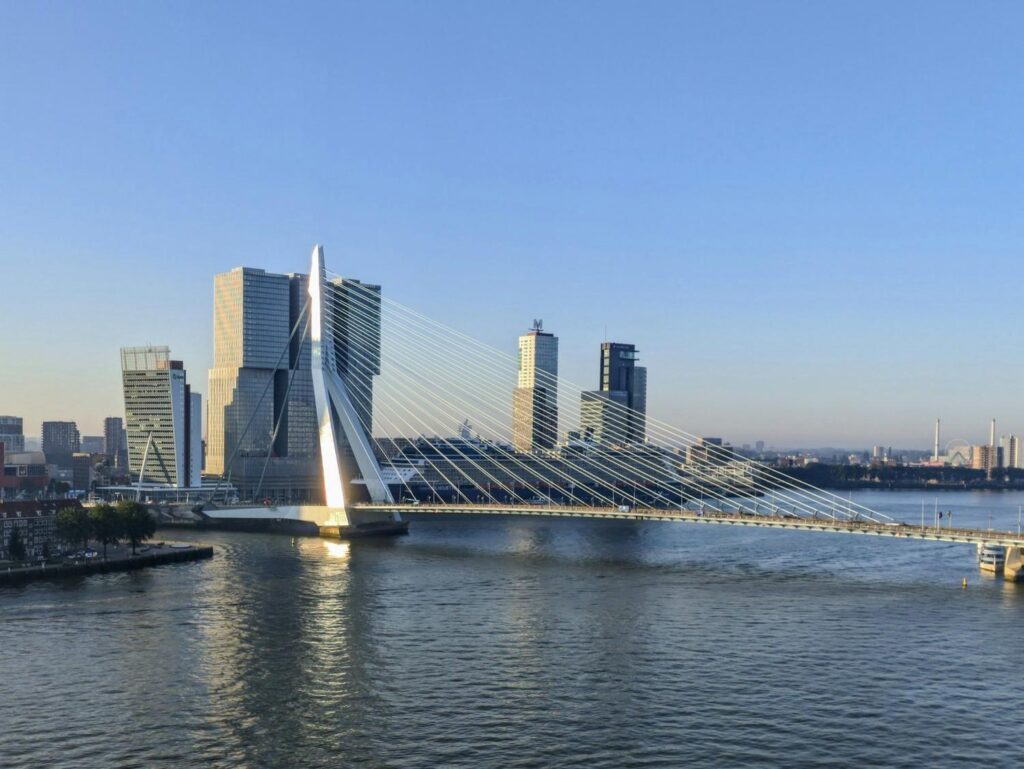
Photo by Thomas Konings on Unsplash
The Erasmus Bridge (known locally as Erasmusbrug) is one of the most recognizable landmarks in Rotterdam. Spanning the River Maas, this striking cable-stayed bridge connects the northern and southern parts of the city, playing a crucial role in the city’s transport infrastructure. But it’s not just a functional bridge—it’s a piece of modern architecture and a symbol of Rotterdam’s innovative spirit.
Named after the famous Dutch philosopher Desiderius Erasmus, the bridge is often referred to as “The Swan” because of its elegant, swan-necked design. Its stunning lines and towering pylon make it a true icon of Rotterdam’s contemporary skyline, and it’s a must-see for anyone visiting the city.
🌟 Highlights of Erasmus Bridge (Erasmusbrug)
🏗️ Impressive Design and Architecture
- Designed by architect Ben van Berkel and completed in 1996, the Erasmus Bridge features a unique asymmetrical design with a 139-meter-high pylon that supports the bridge’s cables. The elegant white steel structure stands out against the backdrop of Rotterdam’s modern skyline, making it a favorite subject for photographers.
- The bridge’s most striking feature is its distinctive “swan neck” shape, which gives it a graceful, flowing appearance that seems to rise from the water like the neck of a swan.
🚶♀️ A Walk Across the Icon
- The Erasmus Bridge is more than just a functional piece of infrastructure; it’s also a walking route with spectacular views of the city and the River Maas. Whether you’re walking from the northern side of Rotterdam, near the Kijk-Kubus (Cube Houses), or from the south side, you’ll be treated to panoramic views of the city, the Euromast, and the port of Rotterdam.
- Take your time walking across the bridge, enjoying the views of Rotterdam’s waterfront, as well as the nearby Rotterdam skyline, filled with impressive modern architecture.
🚤 Connection Between the City’s Two Sides
- The bridge plays an essential role in linking the northern and southern parts of Rotterdam. The north side is known for its modern architecture, shopping districts, and entertainment areas like Witte de Withstraat, while the south side is home to the Euromast, Maritime Museum, and the Harbour area.
- For a deeper exploration of Rotterdam, crossing the Erasmus Bridge is one of the best ways to experience the city’s contrasts. The southern side, in particular, offers a more peaceful and residential feel, with its green spaces and local attractions.
🚆 Transport Hub
- The Erasmus Bridge is also vital for transportation. It carries road traffic, trams, and bikes, making it one of the busiest bridges in the Netherlands. If you’re traveling by public transport, it’s easy to cross the bridge via tram lines that run frequently, giving you quick access between the northern and southern parts of the city.
📸 Icon for Photographers
- The Erasmus Bridge is often regarded as one of the most photogenic spots in Rotterdam. Whether you’re looking for a dramatic skyline shot, capturing the elegance of the bridge itself, or just snapping photos of the beautiful sunset over the river, the bridge provides an incredible backdrop for photographers of all skill levels.
- Early mornings and late afternoons are particularly great times to capture the bridge with soft, golden light that highlights its curves and shape.
📍 How to Get There
- Location: The Erasmus Bridge spans the River Maas and connects the northern part of Rotterdam (near the Kijk-Kubus and Witte de Withstraat) to the southern district (near the Euromast and Maritime Museum).
- By Public Transport: The bridge is easily accessible by tram and bus from various points in the city. Tram lines 7 and 20 run across the bridge, linking both sides of Rotterdam. Rotterdam Blaak Station is nearby, connecting the city center to the bridge.
- By Foot: It’s a pleasant walk from the Rotterdam Central Station to the Erasmus Bridge. From the station, it’s around a 20-minute walk. If you’re near the Kijk-Kubus (Cube Houses), it’s just a few minutes on foot.
- By Car: If you’re driving, the Erasmus Bridge is accessible via several roads that connect to the central and southern parts of the city. Parking can be limited in the surrounding areas, so it’s advisable to use public transport if possible.
🕒 Visitor Information
- Best Time to Visit: The Erasmus Bridge is an iconic part of the Rotterdam skyline, and it can be visited at any time of the day. However, it’s especially beautiful during the golden hour (early morning or late afternoon), when the soft sunlight casts an enchanting glow on the bridge and the city’s architecture.
- Walking and Cycling: The bridge is pedestrian and cyclist-friendly, with dedicated pathways on either side. Whether you’re on foot or bike, it’s a great spot to enjoy the views of the water and the city. It’s especially popular with locals and tourists alike for a scenic walk or bike ride.
- Photography: As one of the most photographed landmarks in Rotterdam, it’s worth bringing your camera along to capture the elegance of the bridge and the breathtaking views from the structure.
💡 Travel Tips
- 📸 Capture the Sunrise or Sunset: The Erasmus Bridge offers excellent views of sunrises and sunsets over the river. If you’re a photographer, try to visit at these times to get the best lighting for your shots.
- 🚲 Bring Your Bike: Rotterdam is a bike-friendly city, and cycling across the Erasmus Bridge is a popular activity. Enjoy the smooth bike paths while taking in the views of the river and the skyline.
- 🚶♂️ Take a Stroll: Walking across the bridge is one of the best ways to fully appreciate the stunning design of the bridge and the views. The wide walkways make it a pleasant experience for pedestrians.
- 🛳️ Take a Boat Tour: After crossing the Erasmus Bridge, consider taking a boat tour along the River Maas for a unique perspective of Rotterdam’s skyline and maritime history.
The Erasmus Bridge is more than just a crossing over the River Maas. It’s an architectural masterpiece that captures the essence of Rotterdam’s innovative spirit. Whether you’re admiring it from the city’s streets, walking or cycling across it, or capturing it through the lens of a camera, the Erasmus Bridge offers an unforgettable experience.
With its unique design, stunning views, and central location, it’s one of Rotterdam’s top landmarks. So, whether you’re exploring the city for the first time or you’re a long-time resident, the Erasmus Bridge is a must-see destination that perfectly symbolizes the modern, dynamic energy of Rotterdam.
Boijmans Van Beuningen Depot
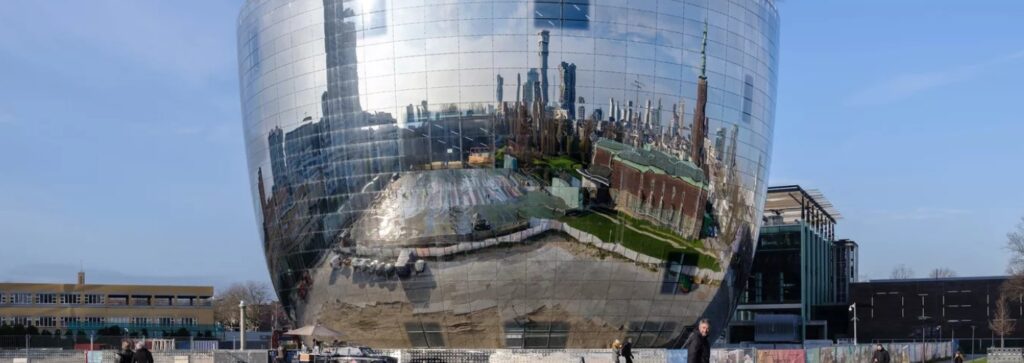
The Boijmans Van Beuningen Depot is one of Rotterdam’s most innovative cultural attractions, merging cutting-edge architecture with the world of fine art. Opened in 2021, the Depot is the first of its kind in the world—a public art storage facility that allows visitors an unprecedented glimpse into the behind-the-scenes of a world-class museum. As part of the Museum Boijmans Van Beuningen, the Depot not only showcases the museum’s extraordinary collection but also introduces an entirely new way of experiencing art.
Designed by the renowned architecture firm MVRDV, the Depot stands as a stunning example of modern design, with its distinctive mirror-covered facade reflecting the city of Rotterdam and its surroundings. As a hub for art conservation, storage, and exhibition, the Depot is an essential stop for art lovers, architecture enthusiasts, and anyone eager to learn about the inner workings of a major art institution.
🌟 Highlights of the Boijmans Van Beuningen Depot
🖼️ Unveiling the Art Collection
The Depot serves as the art storage and conservation center for Museum Boijmans Van Beuningen’s vast and diverse collection, which includes works from the Middle Ages to contemporary art. Visitors are invited to explore parts of the museum’s collection that are usually kept in storage, allowing for an interactive and educational experience.
In the Depot, you’ll find a staggering 151,000 objects, ranging from paintings, sculptures, and photographs to applied arts and designs. Some pieces are displayed in open storage, while others are shown in temporary exhibitions. This setup offers art lovers an insider’s view of the museum’s inner workings—you’ll get to see how pieces are handled, preserved, and cared for by experts.
🏢 A Masterpiece of Architecture by MVRDV
Designed by the award-winning architectural firm MVRDV, the Depot is as much an art installation as it is a functional space. The unique, mirror-clad building reflects both the city skyline and the nearby museum, creating an intriguing visual dialogue between the space and its surroundings. The building’s design is rooted in the idea of transparency, with large glass panels offering visitors a look inside the art storage areas.
The multi-level building houses several galleries, conservation labs, and study rooms. The reflective surface not only enhances the aesthetic value of the Depot but also symbolizes the museum’s mission to share the world of art with the public in an open and accessible way.
🖌️ Interactive Art Experiences
The Depot doesn’t just focus on storing art—it also creates a hands-on, interactive experience for visitors. On select days, you can observe conservators at work, learn about restoration techniques, and see art pieces being carefully examined, cleaned, or repaired. Special workshops and talks are held regularly, offering deeper insights into the field of art preservation and museum practices.
One of the most exciting features of the Depot is its rotating exhibitions, where you can experience art in the process of being stored, catalogued, and prepared for future display at the Boijmans Van Beuningen Museum.
🌍 Sustainability and Innovation
The Depot stands as a model for sustainable architecture, featuring a variety of green building techniques that minimize its environmental impact. It is designed with a low-energy footprint, using solar panels, green roofs, and sustainable materials. The building also utilizes advanced climate control systems to ensure that the precious artworks stored within it are preserved under optimal conditions.
By focusing on sustainability, the Boijmans Van Beuningen Depot sets a new standard for museum storage and public access, blending art conservation with environmental responsibility.
📍 How to Get There
Address: Boijmans Van Beuningen Depot, Museumpark, 3015 CB Rotterdam, Netherlands
- By Public Transport: The Depot is easily accessible from Rotterdam Central Station. You can take the metro or tram to the Erasmus Bridge area or Museumpark, where the Depot is just a short walk away.
- By Foot: The Depot is located near several major attractions in Rotterdam, such as the Boijmans Van Beuningen Museum, Kunsthal Rotterdam, and the Euromast. If you’re already in the museum district, it’s a great opportunity to explore on foot.
- By Bike: Rotterdam is known for being a bike-friendly city, and cycling to the Depot is a wonderful option if you want to enjoy the city’s architectural landscape along the way.
🕒 Visitor Information
- Best Time to Visit: The Boijmans Van Beuningen Depot is a year-round attraction, but visiting during weekdays offers a quieter experience compared to the weekends. The Depot’s rotating exhibitions also offer something new each time you visit, so you can return to experience different art displays.
- Accessibility: The Depot is fully accessible for visitors with mobility challenges, featuring elevators, ramps, and other amenities for easy access to all floors.
💡 Travel Tips for Visiting Boijmans Van Beuningen Depot
🎥 Bring Your Camera:
The Depot is a photogenic location, especially its mirror-clad facade. The interaction between the building and its surroundings offers unique photo opportunities. Be sure to capture the stunning views of Rotterdam from the rooftop or explore the art storage areas for behind-the-scenes shots.
🧳 Take a Guided Tour:
If you’re interested in learning more about the conservation and storage practices behind art museums, consider joining a guided tour. These tours offer insights into the art handling process, as well as the building’s architectural and environmental innovations.
🌱 Explore the Museumpark:
After your visit to the Depot, take a stroll through the surrounding Museumpark area. It’s a lovely space to relax, with a number of cultural institutions, including the Kunsthal and Natural History Museum.
📚 Learn about Art Preservation:
Don’t miss the opportunity to observe conservators at work. Watching the preservation and restoration of art offers an entirely new perspective on the objects in the Depot and the delicate care they require.
The Boijmans Van Beuningen Depot is more than just a storage facility—it’s a groundbreaking concept that allows visitors to dive into the world of art conservation while also experiencing the cutting-edge architecture of the building itself. Its innovative design, interactive experiences, and commitment to sustainability make it a must-visit attraction for anyone interested in art, architecture, or museum practices. Whether you’re a seasoned art lover or a curious traveler, the Depot offers a unique and immersive experience that goes beyond traditional art exhibitions.
Euromast Tower
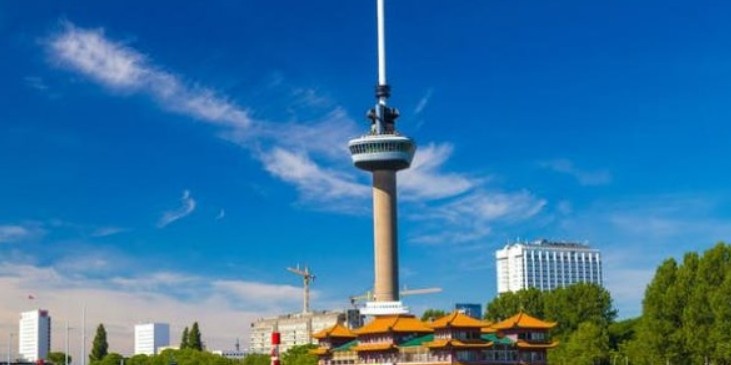
Standing proudly at 185 meters, the Euromast Tower is one of the most iconic landmarks in Rotterdam, offering visitors unparalleled views of the city and beyond. As one of the tallest structures in the Netherlands, it is the perfect spot for panoramic views, a bit of adventure, and even a luxurious experience. Whether you’re an architecture enthusiast, an adrenaline junkie, or simply looking to take in the stunning sights of Rotterdam, the Euromast promises an unforgettable experience.
Originally built for the 1960 Floriade (a world horticultural exhibition), the Euromast has since become an enduring symbol of Rotterdam and is one of the city’s top attractions.
🌟 Highlights of Euromast Tower
🌇 Breathtaking Views of Rotterdam
- The main draw of the Euromast is its observation deck, located 100 meters above the city. From this vantage point, you can enjoy a 360-degree view of Rotterdam, its bustling harbor, and the surrounding areas. On a clear day, you can see as far as the North Sea and even the Dordrecht skyline in the distance.
- The Euromast provides incredible views of the city’s architectural marvels, including the Erasmus Bridge, the Markthal, and the Rotterdam skyline. You’ll also get a close-up look at the River Maas, the Port of Rotterdam, and the Euromast’s unique design.
🌀 The Space Tower and Thrill Seeker’s Dream
- For those seeking an extra thrill, the Euromast offers a once-in-a-lifetime experience with its “Space Tower”. The Space Tower is a rotating section of the observation deck that provides a dynamic, 360-degree view while you’re seated in a luxurious glass capsule. As it rotates, you’ll feel like you’re gliding over the city while taking in breathtaking panoramic views of Rotterdam’s architectural wonders and the surrounding water.
- For even more excitement, there’s the abseiling experience, where you can rappel down the side of the tower for a thrill-filled descent. This is ideal for adrenaline junkies looking to take in some incredible sights while engaging in an exhilarating activity.
🍽️ Dining with a View
- The Euromast is also home to a restaurant where you can enjoy a meal while overlooking the city. The Brasserie offers a fine dining experience with gourmet dishes, making it the perfect place to relax and savor a meal with a view.
- If you’re in the mood for something more casual, you can grab a drink or snack at the Euromast café, also offering a view of Rotterdam’s skyline. Whether you’re sipping on a coffee or enjoying a glass of wine, it’s a great way to relax and take in the surroundings.
🌿 Euromast Park
- For those who want to extend their visit, Euromast Park surrounds the tower, providing a peaceful spot to wander and relax. The park is perfect for a leisurely stroll or a picnic with a view of the tower, making it a great place to enjoy nature before or after visiting the observation deck.
- The green spaces and natural beauty around the tower offer a welcome contrast to the city’s urban energy, and it’s a wonderful place to escape the hustle and bustle for a while.
🎉 Events and Special Occasions
- The Euromast hosts a variety of events throughout the year, including private dinners, corporate events, and weddings. The rotating observation deck makes it a unique and memorable venue for special occasions.
- Special light shows and seasonal events also take place, making the Euromast a dynamic spot for both day and night visits.
📍 How to Get There
- Location: The Euromast is situated in Het Park, close to the Museumpark and near attractions such as the Maritime Museum and Kunsthal Rotterdam.
- By Public Transport: The tower is easily accessible by public transport. You can take a tram or bus to the Euromast station, which is located a short walk from the tower. Rotterdam Central Station is around a 10-minute tram ride away.
- By Foot: If you’re staying in central Rotterdam, the Euromast is about a 20-minute walk from Rotterdam Central Station. You’ll pass by scenic spots, including the Museumpark, along the way.
- By Car: There is parking available nearby the tower, but during peak times, it can get crowded. It’s often easier to take public transport or walk from the city center.
🕒 Visitor Information
- Best Time to Visit: The Euromast is an all-season destination, but the best time to visit for clear views is typically during the spring and summer months when the weather is mild. Early mornings and late afternoons are also ideal to avoid crowds and capture the best light for photography.
- Opening Hours: The Euromast is generally open every day, with hours running from 10:00 AM to 10:00 PM. The tower’s restaurant and café may have varying hours, so it’s best to check ahead if you’re planning a meal.
- Admission: Entry to the observation deck is typically €10-€12, with additional charges for the Space Tower or abseiling experience. If you’re planning to dine at the restaurant, it’s advisable to make a reservation, especially during weekends or holidays.
💡 Travel Tips
- 📸 Bring Your Camera: The views from the Euromast are nothing short of spectacular, so make sure to bring your camera or smartphone to capture some amazing photos of the skyline, Erasmus Bridge, and the river.
- 🌞 Visit for Sunset: For a truly magical experience, try to visit the Euromast during sunset. Watching the sun dip below the horizon, with the skyline bathed in soft golden light, is a moment you won’t forget.
- 🧗♀️ Try Abseiling: If you’re a fan of adventure, consider booking an abseiling experience down the side of the tower. It’s a unique way to add some adrenaline to your visit while getting an up-close view of the city.
- 🥂 Dine with a View: Make your visit extra special by dining at the Euromast Restaurant. The setting is perfect for a romantic evening or a celebration, offering delicious food alongside unbeatable views.
The Euromast Tower is a must-visit attraction in Rotterdam, offering the best views of the city, thrilling experiences like abseiling and the Space Tower, and a relaxing spot to enjoy a meal or drink. Whether you’re looking to take in the sights, try something adventurous, or simply enjoy a moment of peace in the park, the Euromast is the perfect place to see Rotterdam from above.
Delfshaven
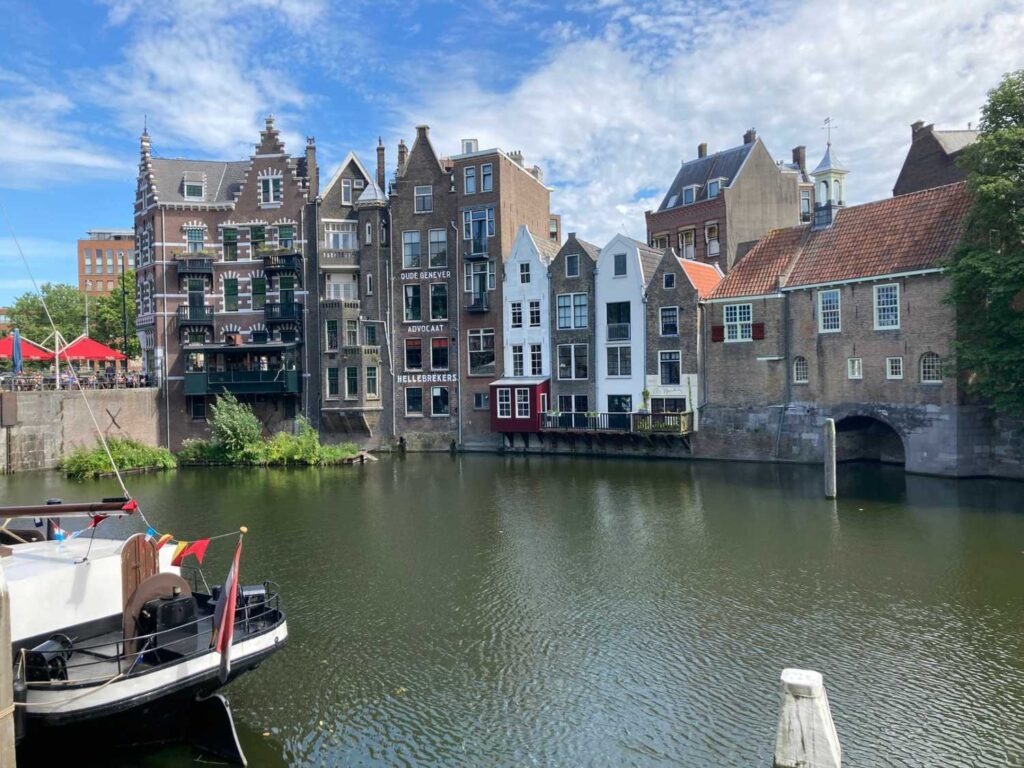
Photo by Desiré Kranenburg on Unsplash
Tucked away in the heart of Rotterdam, Delfshaven offers visitors a glimpse into the city’s rich history and maritime past. Unlike much of Rotterdam, which is known for its modern architecture and post-WWII reconstruction, Delfshaven is a charming area that has managed to preserve its historic character, making it a must-see for anyone wanting to explore the city’s roots.
Originally a small village, Delfshaven is now a picturesque district on the banks of the New Meuse River, where old brick buildings, cobbled streets, and traditional Dutch houses paint a picture of life in the 17th century. It’s the perfect blend of history, culture, and scenic beauty, offering visitors an experience that feels a world away from the bustling city center.
🌟 Highlights of Delfshaven
🚢 A Historic Maritime Hub
Delfshaven’s history is deeply intertwined with the Dutch Golden Age, particularly during the 17th century, when the area was a key hub for trade and shipping. It played a pivotal role in the development of Rotterdam as a major maritime city. The area is home to several historic ships and canals, which still reflect the district’s maritime past.
One of the most iconic landmarks in Delfshaven is the Pilgrim Fathers’ Church, which is closely associated with the Pilgrims’ journey to America. In 1620, a group of English Separatists, seeking religious freedom, boarded the Speedwell here before setting sail for the New World. This event is commemorated at the church, and the Pilgrim Fathers are celebrated as part of Delfshaven’s heritage.
🏘️ Charming Historic Architecture
Delfshaven is famous for its well-preserved buildings, many of which date back to the 17th century. Strolling through the area, you’ll encounter old Dutch warehouses, gabled houses, and traditional Dutch brick architecture that gives a taste of how Rotterdam looked before it was heavily bombed during World War II. The area has been carefully preserved to maintain its historic charm, making it one of the few places in Rotterdam where the old meets the new.
One of the most striking buildings in Delfshaven is the Delfshaven Windmill (De Distilleerketel), a beautiful windmill that dates back to the 18th century. It’s one of the last remaining mills in the area and offers a peek into the traditional methods of milling grain that were common in this part of the city.
🌿 Scenic Canals and Waterfront Views
Delfshaven is a serene area with picturesque views of its canals and the New Meuse River. The canals are lined with charming cafes, restaurants, and art galleries, offering a peaceful atmosphere that contrasts with the hustle and bustle of Rotterdam’s more modern districts. A walk along the water’s edge is the perfect way to soak in the district’s historic charm and enjoy the scenic beauty.
For a more in-depth view, hop aboard a boat tour or rent a bike and explore the district’s canals at your own pace. These tours will take you through the area’s winding waterways and offer unique perspectives of its historic buildings and waterfront views.
🖼️ Cultural and Artistic Attractions
Delfshaven isn’t just about its history—it’s also a vibrant cultural hub. The area is home to several art galleries, craft shops, and small museums that showcase the region’s creative side. One such spot is the Delfshaven Art Gallery, where you can admire contemporary Dutch art in a beautifully restored historic building.
The district is also known for its cultural festivals, which attract both locals and tourists alike. Events such as the Delfshaven Festival celebrate local culture, food, and arts, bringing together a variety of activities, performances, and music.
📍 How to Get There
Address: Delfshaven, Rotterdam, Netherlands
- By Public Transport: Delfshaven is easily accessible by metro or tram from Rotterdam Central Station. The metro line D will take you directly to the Delfshaven Station, from where it’s just a short walk to the district.
- By Foot: If you’re staying near the city center, it’s about a 20-minute walk to Delfshaven. The walk is a great way to see the changing landscapes of Rotterdam as you move from the more modern districts to the historic charm of Delfshaven.
- By Bike: Rotterdam is one of the most bike-friendly cities in Europe, and biking to Delfshaven is a wonderful option for those looking to explore the area on two wheels. It’s a scenic ride through the city’s streets, with many bike lanes and paths along the way.
🕒 Visitor Information
- Best Time to Visit: Delfshaven is a beautiful area to visit year-round, but the spring and summer months offer the best weather for enjoying a stroll along the waterfront or sitting in one of the district’s charming cafes. The area is also quieter during the weekdays, making it ideal for those seeking a peaceful escape from the city’s busier districts.
- Accessibility: Delfshaven is accessible for visitors with mobility issues, with several areas offering wheelchair access. The district is relatively flat, and there are paved streets, making it easy to explore by foot or bike.
💡 Travel Tips for Visiting Delfshaven
📸 Capture the Beauty of Delfshaven:
Delfshaven is a photographer’s paradise with its quaint canals, historic buildings, and picturesque windmills. Make sure to take some time to snap photos, especially around sunset, when the light reflects beautifully off the canals.
🛶 Take a Canal Tour:
For a unique perspective of Delfshaven, consider taking a canal boat tour. These tours offer a deeper look into the district’s maritime heritage and provide a relaxing way to enjoy the surroundings.
🥖 Explore Local Eateries:
Delfshaven is home to a variety of charming cafes and restaurants that serve delicious Dutch specialties and international cuisine. Whether you’re in the mood for fresh seafood, a Dutch pancake, or a coffee with a view of the canals, you’ll find something to suit your taste.
📚 Learn About the Pilgrims:
If you’re interested in the Pilgrim Fathers, take the time to visit the Pilgrim Fathers’ Church and learn about the history of their journey to the United States. It’s a fascinating piece of history that connects Delfshaven to the broader story of American colonization.
Delfshaven is a place where history and culture collide in the heart of modern Rotterdam. From its historic buildings and canals to its charming cafes and art galleries, Delfshaven offers an unforgettable experience that provides a rare glimpse into the city’s past. Whether you’re strolling along the water, visiting historical landmarks, or simply enjoying the peaceful atmosphere, Delfshaven is a beautiful and enriching part of Rotterdam that you won’t want to miss.
This description is SEO-optimized with keywords like Delfshaven Rotterdam, Pilgrim Fathers Church, historic districts Rotterdam, Delfshaven Windmill, and canal tours Rotterdam, helping attract organic search traffic while delivering an informative and engaging overview of the area.
Kunsthal Rotterdam

Located in the heart of Rotterdam, the Kunsthal is one of the city’s most celebrated museums of contemporary art. With its striking modern architecture and ever-changing exhibitions, the Kunsthal attracts art lovers, culture enthusiasts, and curious travelers alike. Designed by Renzo Piano, the museum is a visual treat in itself, seamlessly blending with the city’s dynamic, modern landscape.
The museum offers an impressive mix of temporary exhibitions, spanning visual arts, photography, fashion, and design. It stands out for its bold approach to curating innovative, eclectic shows that feature both established artists and emerging talent.
🌟 Highlights of Kunsthal Rotterdam
🏛️ Architectural Marvel
- The Kunsthal was designed by renowned architect Renzo Piano and opened in 1992. The building is known for its bold, angular design, with sharp lines, open spaces, and dramatic use of glass and steel. Its distinctive shape makes it a striking addition to Rotterdam’s architectural landscape.
- The museum is characterized by its flexible, open-plan exhibition spaces, allowing for a wide variety of displays, from large-scale installations to intimate exhibitions. The building itself becomes part of the art, with light, shadows, and reflections adding depth to each exhibit.
🎨 A Rich Variety of Exhibitions
- The museum is known for hosting temporary exhibitions that span a broad range of art forms and subjects, including contemporary art, photography, fashion, design, and even architecture.
- Kunsthal has partnered with major institutions and galleries worldwide, ensuring that it offers internationally recognized exhibitions alongside groundbreaking works by emerging artists. Some notable past exhibitions have included works by Van Gogh, Picasso, Andy Warhol, and Banksy, as well as shows focusing on pop culture, modern design, and innovative photography.
🖼️ A Diverse Collection
- While Kunsthal Rotterdam is known for its temporary exhibitions, it also has a remarkable permanent collection that includes modern and contemporary art from across the world. The museum’s collection features works from Dutch, European, and international artists. Expect to see an array of works from pioneering photographers, avant-garde painters, and cutting-edge designers.
- The museum often focuses on interdisciplinary collaborations, so exhibitions often blend art, technology, and science in unique and exciting ways. Visitors can expect unexpected, thought-provoking combinations of visual art, multimedia, and interactive installations.
🌍 Global Reach and Local Connection
- Kunsthal Rotterdam is part of the city’s vibrant cultural scene. Rotterdam itself is known for its progressive attitude toward art and culture, and Kunsthal plays an important role in making the city an international art destination.
- The museum regularly features international artists but also emphasizes local talent, highlighting the work of Dutch artists and Rotterdam-based creators. The combination of global and local exhibitions creates a dynamic cultural space that is always evolving.
🍷 Museum Café and Shop
- After exploring the exhibitions, visitors can relax at the museum café, which offers a range of snacks, light meals, and drinks. The café’s sleek, modern design complements the museum’s atmosphere, and its outdoor terrace is a great spot to unwind, especially during warmer months.
- The museum shop offers a curated selection of books, prints, and design pieces inspired by the exhibitions. It’s a great place to pick up unique souvenirs or gifts related to art and culture.
📍 How to Get There
- Location: The Kunsthal is located in the Museumpark area of Rotterdam, close to several other cultural institutions like the Boijmans Van Beuningen Museum, Natural History Museum, and Het Nieuwe Instituut.
- By Public Transport: The museum is easily accessible by tram and bus. You can take tram line 7 or bus 33 to get to the Museumpark stop. From there, it’s a short walk to the Kunsthal entrance.
- By Foot: If you’re staying in the city center, the museum is a 15-minute walk from Rotterdam Central Station. You’ll pass by several iconic buildings and green spaces along the way.
- By Car: There is parking available near the museum, although it can be busy during peak times, especially on weekends. It’s usually easier to take public transport or walk from nearby areas.
🕒 Visitor Information
- Best Time to Visit: The museum is an excellent destination year-round, as exhibitions change frequently. If you prefer to visit with fewer crowds, try to come during the weekdays or in the morning hours when it’s typically quieter.
- Opening Hours: The Kunsthal is open every day of the week, typically from 10:00 AM to 5:00 PM, and sometimes stays open later for special events or exhibition openings. It’s worth checking the museum’s website to see if any special events are taking place during your visit.
- Admission Fees: Entry to the Kunsthal is usually around €10, with discounts for students, seniors, and children. Some exhibitions may have additional fees, so it’s a good idea to check the museum’s website for up-to-date information.
💡 Travel Tips
- 🖼️ Check the Calendar for Special Exhibitions: The Kunsthal is known for hosting some of the best temporary exhibitions in Rotterdam. Be sure to check their website to see what’s on during your visit so you can plan accordingly.
- 📸 Photography Rules: While photography is allowed in many parts of the museum, be sure to check the signs as some exhibitions may have restrictions on taking photos. If you’re a fan of art photography, you’ll likely want to snap some shots of the unique displays and architecture.
- 🍽️ Lunch at the Café: If you’re spending a few hours at the museum, make sure to grab a coffee or light meal at the museum café. It’s a relaxing spot to reflect on the exhibitions.
- 🛍️ Museum Shop: Don’t miss the museum shop, where you can find books, posters, and art-related products that tie into the exhibitions. It’s the perfect place to pick up a memorable gift or keepsake from your visit.
The Kunsthal Rotterdam is a must-visit for art and culture lovers, offering a dynamic experience of contemporary art, design, and architecture. Whether you’re exploring cutting-edge photography, engaging multimedia installations, or timeless works of art, the museum offers something for everyone. With its stunning building, ever-evolving exhibitions, and central location in Rotterdam’s cultural hub, the Kunsthal is a vibrant and exciting destination for all kinds of visitors.
Maritime Museum

Nestled in the heart of Rotterdam, the Maritime Museum is a must-visit for anyone interested in the city’s rich maritime heritage. Rotterdam has long been one of the world’s most important ports, and the Maritime Museum offers an in-depth look at the city’s pivotal role in the development of global trade and shipping. From its early beginnings as a small fishing village to becoming a major international port, the museum celebrates the sea’s connection to the city’s growth and the Dutch maritime legacy.
Through interactive exhibitions, fascinating ship models, and immersive displays, the Maritime Museum Rotterdam showcases the evolution of navigation, shipping, and maritime technology. It’s an essential stop for those eager to understand the deep historical and modern connection between Rotterdam and the sea.
🌟 Highlights of the Maritime Museum Rotterdam
🚢 Historical Ship Models and Exhibits
The museum boasts an impressive collection of ship models, ranging from historical sailing ships to modern container vessels. Visitors can explore the evolution of naval design and technology through these detailed models. Whether it’s the grand Dutch East India Company ships or the mighty modern freighters, the museum’s collection provides a comprehensive overview of the ships that have sailed Rotterdam’s waters throughout history.
In addition to models, the museum displays historical artifacts, including maps, navigational instruments, and sailors’ equipment, each telling the story of Rotterdam’s maritime development and its connection to global trade routes.
⚓ The Port of Rotterdam – A Living Entity
The Port of Rotterdam is one of the world’s largest and most significant ports, and the museum offers visitors a closer look at its complex operations and the role it plays in the global economy. The museum’s exhibits provide insights into the history of the port, its modern-day logistics, and the sustainability challenges it faces. The Port of Rotterdam is not just a hub for goods and trade; it’s an integral part of the city’s identity, and the Maritime Museum highlights how the port has shaped the development of Rotterdam.
🏴☠️ Maritime Technology and Innovation
The Maritime Museum Rotterdam showcases the constant innovation in maritime technology, from the first seafaring vessels to advanced navigation systems. Exhibits explore how technology has revolutionized shipping and navigation over the centuries. You’ll discover everything from the early days of cartography to the cutting-edge digital innovations that power today’s global shipping networks.
For those interested in the future of maritime technology, the museum offers exhibits about sustainable shipping practices and environmentally friendly technologies that are shaping the future of the industry.
🚢 Historic Ships and Outdoor Exhibits
One of the highlights of the Maritime Museum Rotterdam is its collection of historic ships and outdoor exhibits. Visitors can board actual ships from different periods of Dutch maritime history, including the SS Rotterdam, a former ocean liner, and the Flint, a 19th-century steamship. These ships provide a tangible connection to Rotterdam’s seafaring past and give visitors the opportunity to experience what it was like to sail on a vessel during the heyday of Dutch trade and exploration.
The outdoor exhibits are perfect for those who want to experience the scale of these monumental ships firsthand. It’s a great spot for taking photos, enjoying the harbor views, and learning about the city’s vibrant maritime history.
🧭 Interactive Exhibits and Family-Friendly Fun
The Maritime Museum offers a variety of interactive exhibits designed to engage visitors of all ages. Children can take part in activities such as navigation games and shipbuilding workshops, where they can learn how ships are designed and constructed. There are also digital exhibits where you can virtually explore historic ships and ports, making it an educational and entertaining experience for the whole family.
📍 How to Get There
Address: Maritime Museum Rotterdam, Leuvehaven 1, 3011 EA Rotterdam, Netherlands
- By Public Transport: The Maritime Museum is easily accessible via Rotterdam’s metro system. Take line D or E and get off at Leuvehaven station, which is just a short walk from the museum. Alternatively, you can take tram line 8 or line 20 for easy access.
- By Foot: If you’re staying in Rotterdam’s city center, the museum is about a 15-minute walk from Rotterdam Central Station. The walk takes you through Rotterdam’s harbor district, giving you a taste of the city’s maritime ambiance.
- By Bike: Rotterdam is known for its bike-friendly infrastructure, and cycling to the museum is an excellent option for those looking to explore the city. Bike lanes are plentiful, and there are bike racks available near the museum for secure parking.
🕒 Visitor Information
- Best Time to Visit: The museum is open year-round, but weekdays are generally less crowded, making it easier to explore the exhibits at your own pace. For a quieter experience, consider visiting in the morning.
- Accessibility: The Maritime Museum Rotterdam is fully accessible for visitors with disabilities. The building features elevators, ramps, and wheelchair-friendly paths throughout the museum. Wheelchairs can be requested at the reception if needed.
💡 Travel Tips for Visiting Maritime Museum Rotterdam
🛳️ Explore the Harbor District:
After your visit to the Maritime Museum, take some time to explore the Leuvehaven area and enjoy the picturesque harbor views. The nearby Rotterdam Harbor is bustling with ships and ferries, giving you a real feel for the city’s maritime character.
📸 Capture the Moment:
The historic ships and waterfront views around the Maritime Museum offer fantastic photo opportunities. Don’t forget your camera, especially if you’re visiting with family or friends.
🧳 Plan for Interactive Fun:
If you’re visiting with children, check the museum’s calendar for family-friendly activities, including workshops and interactive exhibits. The museum offers fun learning experiences for all ages.
⚙️ Check Special Exhibitions:
The Maritime Museum regularly hosts special exhibitions related to maritime history, shipping innovations, and Rotterdam’s nautical heritage. Be sure to check the museum’s website before your visit for any temporary exhibits that might interest you.
The Maritime Museum Rotterdam is not just an exploration of the city’s past; it’s a celebration of Rotterdam’s global maritime influence. With its impressive collections, interactive exhibits, and outdoor ships, it’s a fascinating journey for anyone interested in maritime history, technology, and the ever-evolving relationship between cities and the sea. Whether you’re a history buff, a family on an educational outing, or someone curious about Rotterdam’s port culture, the Maritime Museum offers a unique and enriching experience that captures the essence of this vibrant city.
Fenix Food Factory
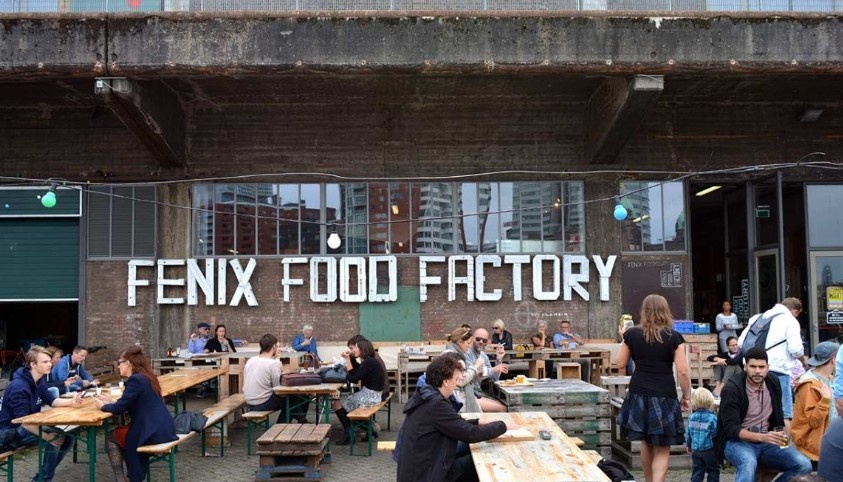
Located in the heart of Katendrecht, a lively and evolving neighborhood in Rotterdam, the Fenix Food Factory is a bustling indoor food market that showcases the best of the city’s local food scene. Housed in a historic warehouse by the River Maas, this vibrant space brings together a variety of artisanal producers, craft brewers, chefs, and food entrepreneurs, making it the perfect spot for food lovers, locals, and visitors alike.
Whether you’re after a fresh local bite, a refreshing craft beer, or some unique gourmet products to take home, the Fenix Food Factory offers a one-of-a-kind taste of Rotterdam’s rich food culture.
🌟 Highlights of Fenix Food Factory
🍽️ Artisanal Food Stalls and Local Specialties
- The Fenix Food Factory hosts a wide range of local food producers and artisan food stalls, offering everything from freshly baked bread and organic cheeses to homemade jams and local delicacies.
- Some of the standout offerings include Dutch cheese, locally sourced meats, and freshly made pastries. Many of the stalls emphasize sustainability, seasonal ingredients, and local sourcing, making it a great place to taste the flavors of Rotterdam and the surrounding region.
🍻 Craft Beer and Beverages
- One of the key features of the Fenix Food Factory is its craft beer scene. The market is home to the Kaapse Brouwers, a renowned local brewery that offers a range of handcrafted beers. You can sample their innovative beers, brewed on-site, and learn more about the brewing process.
- In addition to craft beer, the market also offers a selection of local wines, fresh juices, and specialty coffees, giving you plenty of options to pair with your food.
🥪 Gourmet Street Food
- For those looking for a quick bite or a more casual dining experience, the Fenix Food Factory has several food stalls offering gourmet street food. From handcrafted sandwiches and fresh salads to unique international dishes, there’s something for every palate.
- Delicious options include wood-fired pizzas, locally sourced seafood, and even specialty dishes inspired by Rotterdam’s multicultural community, reflecting the city’s diverse flavors.
🧀 Unique Dutch Products and Gourmet Goods
- The Fenix Food Factory is not just a place to eat; it’s also a destination for picking up high-quality local products. Whether you’re looking for artisan cheeses, fresh meats, or locally made sauces and condiments, you’ll find a wide variety of gourmet items to take home or gift to loved ones.
- The market is a great place to stock up on Rotterdam-made goods, such as Dutch licorice, traditional sweets, and smoked meats.
🌿 Sustainability and Local Focus
- The Fenix Food Factory is built around the idea of sustainability, with many of the vendors focusing on environmentally friendly practices. From locally sourced ingredients to minimal waste packaging, the market is committed to promoting a more eco-conscious food culture.
- Many of the vendors also prioritize organic and seasonal products, so you can feel good about supporting sustainable and responsible businesses.
🏢 Historic Location and Modern Vibe
- The Fenix Food Factory is housed in a former warehouse in the Katendrecht district, a neighborhood that has seen a resurgence in recent years. The building’s raw, industrial aesthetic contrasts beautifully with the vibrant and welcoming atmosphere inside the market.
- The interior features exposed brick walls, large wooden beams, and industrial-style décor, giving the space a trendy, yet down-to-earth vibe. It’s the perfect place to enjoy a casual meal or drink while taking in the history and culture of the area.
📍 How to Get There
- Location: Fenix Food Factory is located in the Katendrecht neighborhood, near the Maashaven port, making it easily accessible from the city center.
- By Public Transport: You can take tram line 12 or bus 68 to the Maashaven stop, which is just a short walk from the market. Rotterdam Central Station is about a 10-minute tram ride away.
- By Foot: If you’re staying in the city center, Fenix Food Factory is about a 25-minute walk from Rotterdam Central Station. It’s a pleasant walk through the modern and artistic parts of Rotterdam, making it an enjoyable journey.
- By Bike: Rotterdam is known for its excellent cycling infrastructure, and Fenix Food Factory is easily accessible by bike from anywhere in the city. There are bike racks available near the entrance.
🕒 Visitor Information
- Best Time to Visit: The Fenix Food Factory is open every day, but for a more relaxed experience, try visiting mid-week when it’s less crowded. Weekends can get busy, especially during lunch and dinner hours.
- Admission: There is no admission fee to enter the Fenix Food Factory—you simply pay for the food and drinks you purchase from the vendors.
💡 Travel Tips
- 🍴 Explore the Local Vendors: Be sure to try some local specialties, such as the fresh-baked Dutch bread, smoked meats, or even a wood-fired pizza. Don’t forget to check out the craft beer selection from Kaapse Brouwers!
- 🛍️ Take Home Gourmet Goods: Pick up some local products from the market’s artisanal stalls. You’ll find everything from Dutch cheeses to traditional Dutch sweets, perfect for souvenirs or gifts.
- 🚶♂️ Take a Walk Around Katendrecht: The area surrounding the Fenix Food Factory is also worth exploring. It’s a vibrant, up-and-coming neighborhood with a mix of new urban developments and old harbor charm. Check out nearby spots like the SS Rotterdam or the quirky bars and restaurants of De Kaap.
The Fenix Food Factory is a unique and exciting destination in Rotterdam, offering a great way to experience the local food scene in a vibrant, historical setting. Whether you’re a foodie looking for new flavors or simply seeking a fun spot to spend the afternoon, this food market offers a blend of sustainability, local culture, and delicious food. It’s a must-visit for anyone looking to discover the flavors of Rotterdam.
Miniworld Rotterdam
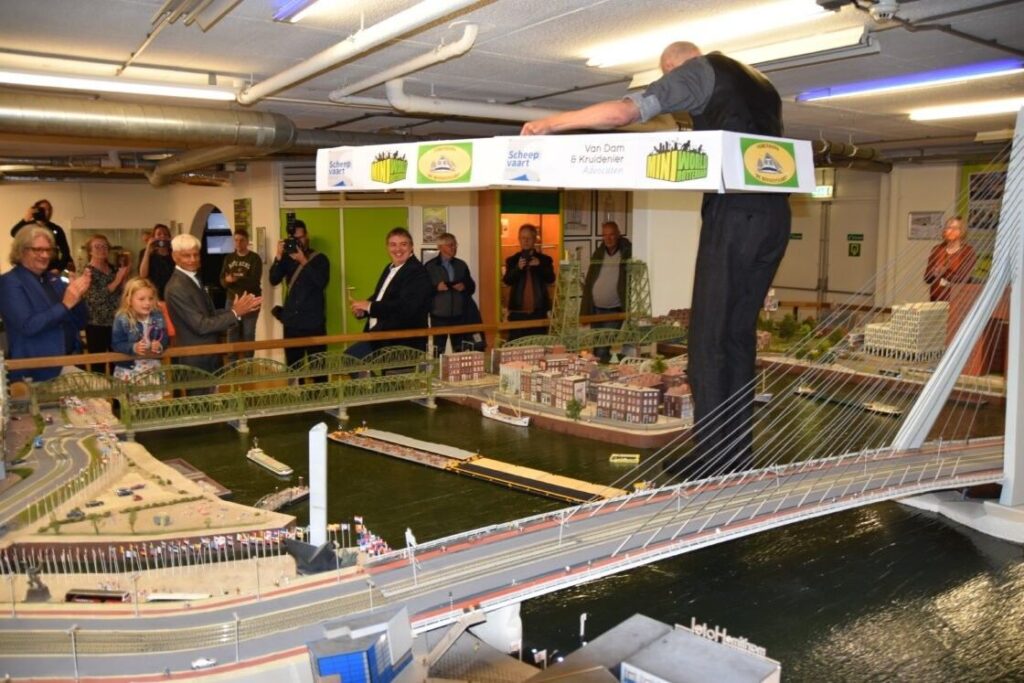
Miniworld Rotterdam offers visitors a chance to step into a miniature version of the vibrant city of Rotterdam and beyond. As the largest indoor miniature world in the Netherlands, this immersive attraction showcases a meticulously detailed, scale-model version of the city, complete with working trains, moving cars, and even changing weather conditions. Whether you’re an architecture enthusiast, a family looking for a fun day out, or someone with a passion for models, Miniworld Rotterdam offers a fascinating experience for visitors of all ages.
Located in the heart of the city, Miniworld is more than just a model—it’s a living, breathing miniature universe that brings Rotterdam and the world to life in stunning detail.
🌟 Highlights of Miniworld Rotterdam
🌍 Rotterdam in Miniature – The City Like You’ve Never Seen It
Miniworld Rotterdam features an incredible scale model of the city, showcasing famous landmarks and neighborhoods, from the modern skyscrapers of the Kop van Zuid to the Erasmus Bridge (Erasmusbrug). The level of detail in the model is staggering, with tiny cars zooming across the streets, trains running along tracks, and even small boats floating in the canals and rivers.
What makes the experience even more impressive is the dynamic lighting and changing weather effects that bring the model to life. The cityscape shifts from day to night, and the model is occasionally subjected to simulated rainstorms and snowfalls, adding a new layer of realism to the experience.
🚅 Interactive Displays and Moving Parts
Miniworld Rotterdam is not just a static display; it’s an interactive wonderland. With moving trains, cars, and airplanes, you can watch how the world works in miniature. The railway network is particularly mesmerizing, with trains chugging along the tracks, while cars zip across the roads. There are also working elevators and cranes, adding an extra level of interactivity that keeps both adults and kids entertained.
The level of movement and functionality in the model makes it feel as if the city itself is operating, albeit in miniature form. The interaction between the moving vehicles and the buildings is truly impressive.
🌧️ Changing Weather and Day-Night Cycle
One of the most captivating features of Miniworld is the dynamic weather system. Watch as the sky darkens, and the lights of the city come to life in the evening. As day turns into night, the miniature world undergoes a transformation, with streetlights and windows glowing in the dark. And just when you think you’ve seen it all, the weather changes—expect simulated rain, snow, and fog that will bring the miniature world to life in new and surprising ways.
🏙️ International Scenes Beyond Rotterdam
While the primary focus of Miniworld Rotterdam is the city itself, the model also includes international landmarks and scenes from around the world. From the bustling streets of New York City to the peaceful countryside of Switzerland, the mini-world is constantly growing and evolving to showcase famous locations, cultures, and iconic structures from various countries.
👨👩👧👦 Family-Friendly Fun
Miniworld Rotterdam is designed to be a fun and educational experience for the whole family. The miniatures and moving parts captivate children, while adults can enjoy the detailed craftsmanship of the models and learn about the various elements of city-building, transportation, and engineering. The museum even offers interactive games for kids, such as a scavenger hunt, to keep them engaged while exploring the miniature world.
📍 How to Get There
Address: Miniworld Rotterdam, Weena 745, 3013 AL Rotterdam, Netherlands
- By Public Transport: Miniworld Rotterdam is easily accessible by metro and tram from Rotterdam Central Station. Take metro lines A, B, or C to Rotterdam Centraal, and from there, it’s just a short walk to Miniworld. Alternatively, you can hop on tram line 8 or line 21 to get close to the attraction.
- By Foot: If you’re exploring Rotterdam city center, it’s only about a 10-minute walk from Rotterdam Central Station, making it an easy stop during a day out in the city.
- By Bike: Rotterdam is one of the most bike-friendly cities in the world, and biking to Miniworld is a great option. The city is equipped with bike lanes, and there are plenty of bike racks available near the entrance.
🕒 Visitor Information
- Best Time to Visit: Miniworld Rotterdam is a great spot to visit year-round. However, to avoid crowds, it’s recommended to come during weekday mornings or afternoons. The dynamic weather effects and changing lights create an entirely different atmosphere during evening visits, so consider coming in the late afternoon for the day-to-night transformation.
- Accessibility: Miniworld Rotterdam is fully accessible for visitors with disabilities, with wheelchair access, lifts, and appropriate facilities available. The spacious layout allows for easy navigation, ensuring everyone can enjoy the experience.
💡 Travel Tips for Visiting Miniworld Rotterdam
🚉 Make It a Multi-Attraction Day:
Miniworld is conveniently located near other key attractions in Rotterdam, such as Rotterdam Central Station, the Erasmus Bridge, and the Kunsthal Rotterdam. Consider combining your visit to Miniworld with a trip to nearby museums, parks, or landmarks to make the most of your day.
📸 Capture the Miniature World:
Don’t forget your camera! The intricate details of the miniatures, especially during the day-to-night transitions, make for some amazing photographs. The bright colors and moving elements of the models are great subjects for creative shots.
🧳 Interactive Fun for Kids:
Miniworld Rotterdam offers hands-on activities for children, including games and challenges to keep them entertained while learning. Check their schedule for family events and workshops to enhance your visit with interactive fun.
🎟️ Book Online for Discounts:
For the best prices and to avoid waiting in line, consider booking your tickets online in advance. The museum often provides discounts for online purchases or group bookings.
Miniworld Rotterdam is a captivating attraction for visitors of all ages, offering a fascinating and interactive journey through the miniature world of Rotterdam and beyond. Whether you’re a fan of models, a family seeking educational fun, or simply looking for something unique to do in Rotterdam, this attraction is a delightful and unforgettable experience. From the dynamic weather effects to the intricate details of the miniatures, Miniworld Rotterdam brings the world to life in the most magical way possible.
📍 How to Get to Rotterdam
- By Air: Rotterdam The Hague Airport (RTM) is just 15 minutes from the city center. Amsterdam Schiphol (AMS) is also accessible by train (under 1 hour).
- By Train: Excellent connections to Dutch cities and high-speed trains to Belgium, France, and Germany.
- By Car: Well-connected highways; parking garages are available, but cycling or public transport is often easier.
🕒 Visitor Information
- Most attractions are open from 10:00 AM to 5:00/6:00 PM.
- Many museums offer free or discounted entry with a Rotterdam Welcome Card.
- Cycling is a top way to explore—bike lanes are everywhere!
💡 Travel Tips
- 🚴 Rent a bike or take a walking tour to explore neighborhoods like Katendrecht and Kop van Zuid.
- 🍽️ Try local favorites like bitterballen, stroopwafels, and Indonesian rijsttafel.
- 🚤 Use water taxis for a fun way to hop around the harbor and riverfront districts.
- 📸 Bring your camera—Rotterdam’s architecture and street art are some of the most Instagrammable in Europe.
- 🛍️ Check out Witte de Withstraat for cool shops, bars, and cultural hangouts.
📝 Additional Information
- Safety: Rotterdam is very safe and walkable; standard city precautions apply.
- Local Etiquette: Tipping (5–10%) is appreciated but not mandatory. A friendly “Dank je wel” (thank you) goes a long way.
- Connectivity: Free Wi-Fi is widely available in public areas, cafés, and hotels.
- Festivals: Don’t miss the International Film Festival (Jan/Feb), North Sea Jazz (July), and the Rotterdam Unlimited Carnival (summer).
- Accommodation: Choose from modern riverfront hotels, chic boutique stays, and eco-friendly hostels.
🌍 Final Thoughts
Rotterdam is where cutting-edge design meets laid-back Dutch lifestyle. It’s a city reborn from the ashes of history, now one of Europe’s most innovative urban destinations. Whether you’re marveling at its architecture, savoring its food culture, or cruising down the Maas River, Rotterdam will surprise and delight you at every turn.
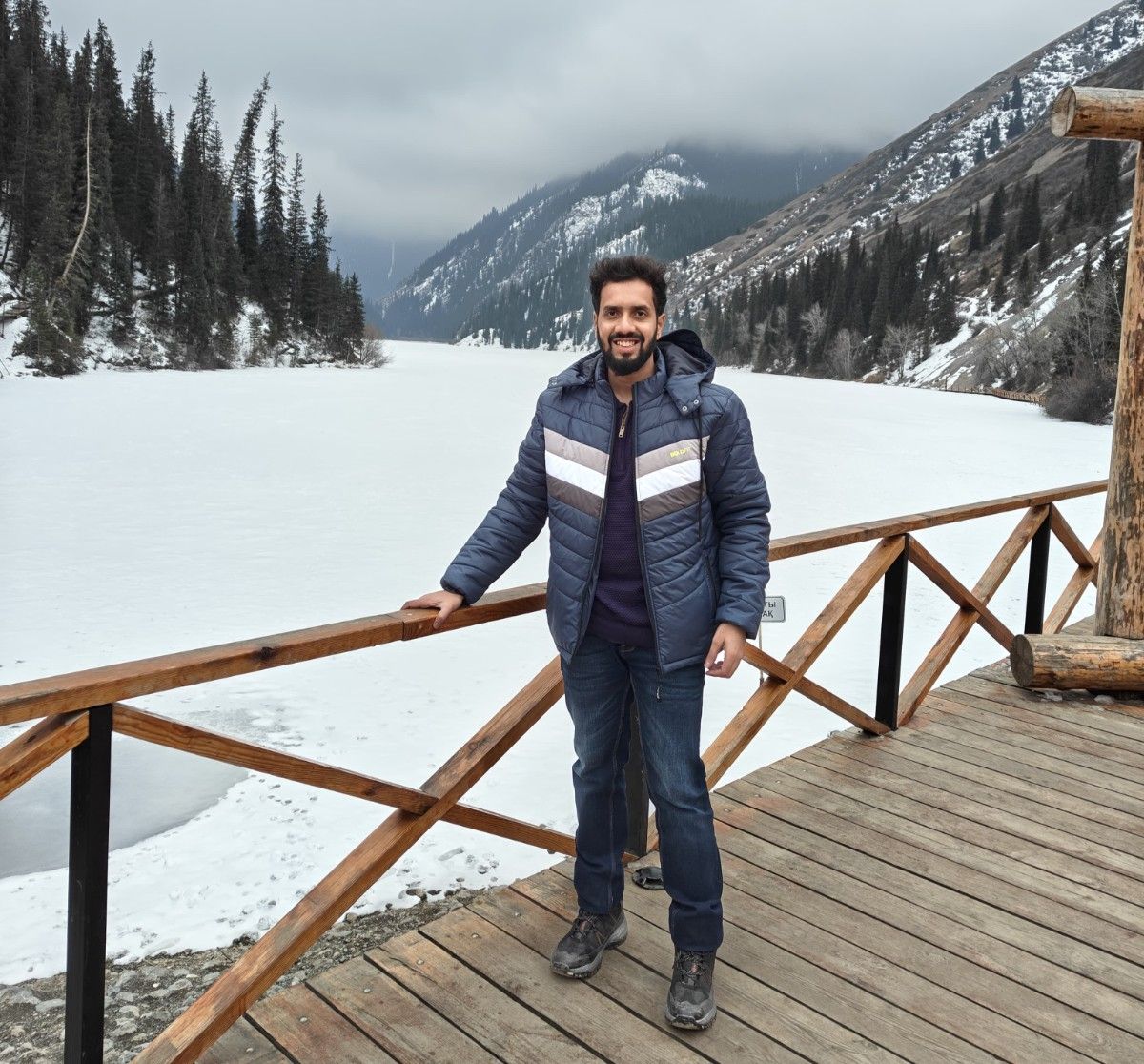
I’m Shreyash Mhashilkar — a full-stack developer by profession, and a passionate explorer of the future at heart.
With a strong foundation in both front-end and back-end , I spend my days building websites and applications that are not just functional, but scalable, intuitive, and user-focused.

